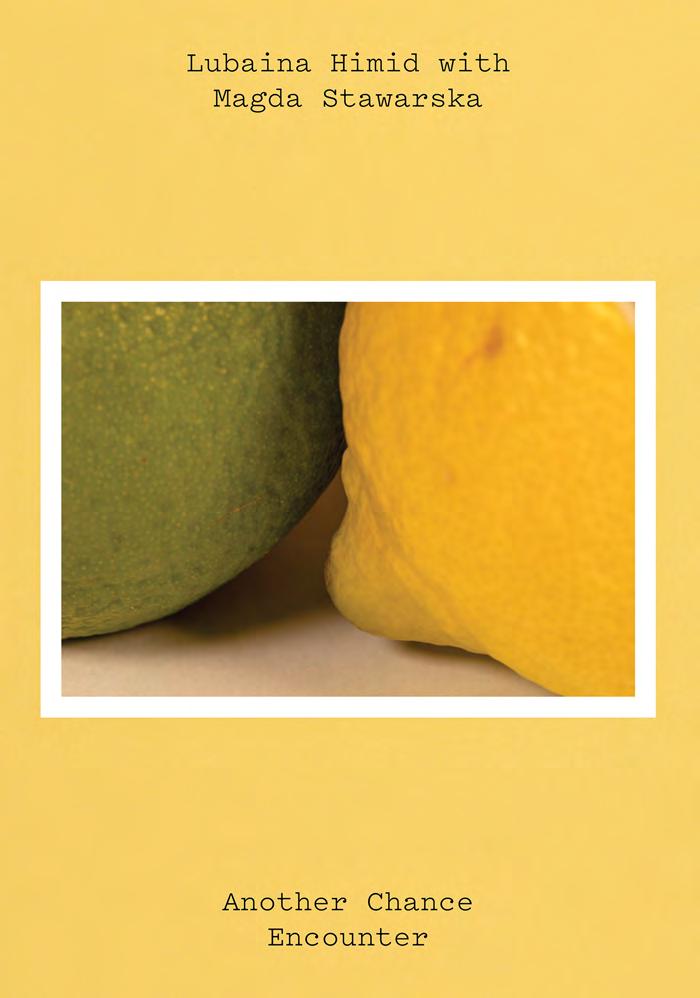
During my residency at Kettle’s Yard I would like to investigate architecture, ritual and conversation. All these are subjects I have tackled before but not in the context of this particular microcosm. I hope to use the buildings and the geography of the town itself to make work about absence and presence, about the establishment and fixing of ideas and the possibility of change. I hope this gives you some idea of my work and I hope to be able to discuss it further with you in person.
Lubaina Himid5
The letter of rejection follows later in the file. We could invent a story of what might have happened on this residency, postulating which rituals would have been investigated, which clues and connections unravelled and which ideas unfixed.
Perhaps Himid would have addressed home, the modernist still life or interior scene, revisiting some of the thinking she had done in collaboration with the curator Jill Morgan, when both were working at Touchstones, Rochdale a decade earlier. She might have reworked a college dinner table into a stage for strategising, or created a new series of portraits of figures absent from history for a college hall. Or maybe something would have begun from the maritime paintings of Alfred Wallis and Christopher Wood, building on Himid’s reimaginings of sea and shore.
The sea has been a major theme of her work, taking in the personal experience of migration by boat from Zanzibar to London as an infant, along with childhood summers on Blackpool beach, and sea-gazing during visits back to Zanzibar as an adult, in full knowledge of the world historical significance of the ocean as a conduit for enslavement and colonial expansion. Himid’s seas are sometimes seen through the windows of seemingly institutional settings, recognising the often unacknowledged presence of those pasts in the structures we live and work within. Elsewhere in Himid’s work, the sea moves from background to foreground. Since the painting Two Shores (1989) to the major bodies of work Beach House (1995), Plan B (1999/2000), Zanzibar (1999–2023) and Le Rodeur (2015–16), it has been a persistent texture that stands in for the brutal remapping of social relations in the violence of colonial extraction.
‘Where life is precious, life is precious’ is the axiom of the Marxist geographer Ruth Wilson Gilmore.6 Gilmore is one of the core strategists of the prison abolition movement in the United States, although her theories and commitments resonate internationally. Abolitionism is about social transformation toward freedom. Fundamentally, this includes the call to ‘decarcerate’, or to abolish prisons and the broader system of criminalisation, but Gilmore has sought a more expansive practice of abolition, what she calls ‘life in rehearsal’.7 The movement of abolition then, is not only about breaking down specific structures – built, institutional, social and psychic – but making new relations. She says we must recognise ‘how interpersonal abolition must be’, referring to the
ways in which the dynamics of power, vulnerability and dehumanisation that the carceral system produces and reproduces, can only be undone by establishing our ‘radical dependency’ on one another to preserve and enrich life.8 ‘Where life is precious, life is precious’ is a blueprint for a future to be worked on in the present, but also a damning indictment of a present still resonating with the violence of the past.9
Recently, I listened to an interview with Gilmore in which she described how she came to geography late, and with a drama degree.10 At first, she joked at the discontinuity, before connecting theatre and geography as practices of world making, which both involve people, things and environments coming together. She goes on to say that political organising, or ‘organising ourselves with one another and the environment’ is the work of placemaking. It is in making these new places, which are always ways of being together, that we can transform reality. If the relations change then so must the architectures, spaces and structures that accommodate us. One of Gilmore’s books is simply titled Change Everything. 11 Lubaina Himid has a mantra: ‘How do you spell change?’12
Most accounts of Himid’s career begin with her training in theatre design, rather than fine art, at Wimbledon College of Art. She has said this is where she learnt to collaborate, because unlike the artist’s studio calibrated for the isolated and original genius, theatre designers must learn to work with others, even if they still want to believe they are in charge.13 Magda Stawarska is one of Himid’s closest collaborators. They began their work together when Himid requested Stawarska’s aid in remastering the audio of the major installation Naming the Money (2004), before revisiting other past bodies of work and making them new. A key example is Zanzibar (1999–2023), a collaborative installation based on a series of a nine paintings that Himid first made after a return visit to the country of her birth, a former British ‘protectorate’, in 1997. Comprised of refracting abstractions, diamond patterns and long drips of paint, Himid has said that the initial works are ‘paintings of cloves, of rain, of closed
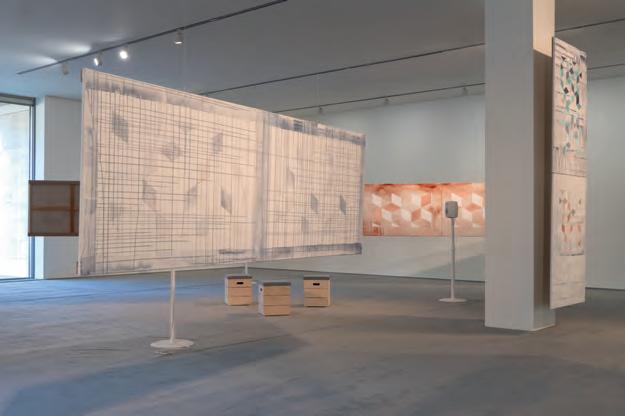
Lubaina Himid and Magda Stawarska, Zanzibar, Installation view, 1999–2023
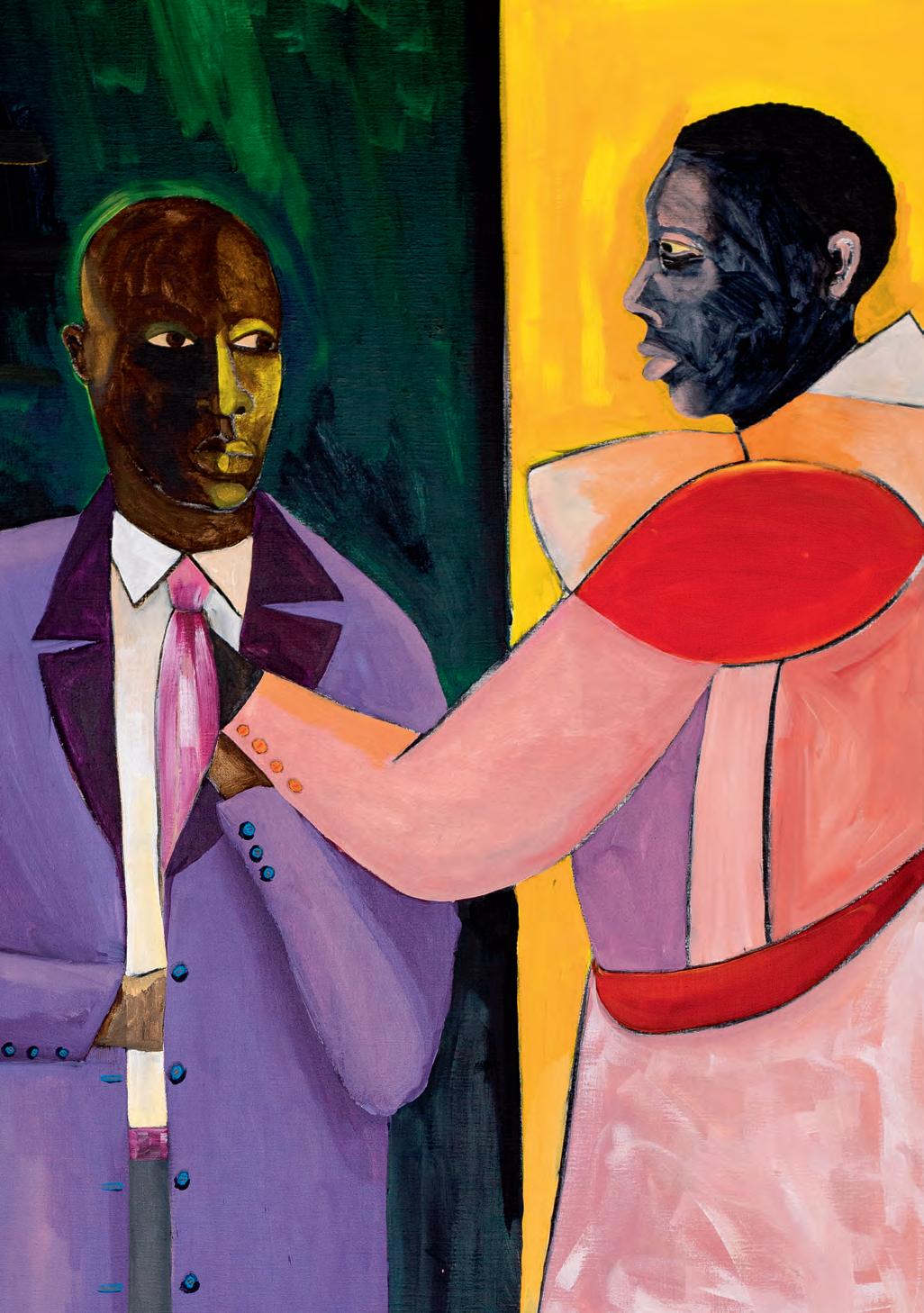
If this can take place in our lives, organisations and societies then it must also be present in art, which not only represents new forms, but by altering our orientation, comportment, or simply, attention to the world and to others, can make something into something else.34 This is what Himid’s compositional paintings do, not proscriptively with their own obscure morality of good and bad actions, but through the presentation of conscious choice.
As Himid has said:
It doesn’t matter actually who you are, but you do have to decide who you are in relation to these people whose room you have chosen to inhabit. The experience should be similar to entering a room and deciding what you’re going to do, how you will react and interact. The paintings are changing every time you step through the door into them, because you were experiencing them differently to the friend who came to the exhibition with you, because your two lives are not the same.35
The invitation to ‘rearticulate our own connections in new (and frightening) forward-looking moves’ is there even in the title of this new body of work: ‘how can I help you?’ 36
In Favours for Years to Come, two figures stand close together. One framed by the threshold and the bright yellow background of the space beyond, transgresses the door and the body of the other figure, sliding his hand underneath his customer’s shirt. The customer’s hand seems to meet it, while his other palm slides under the jacket, which from the script, we learn, he is trying on for size. The two sets of eyes meet; their feet point toward each other.
The customer thinks:
I like the way you feel you can reach inside my shirt without really asking simply because the clothes are yours until they are mine.
While the shopkeeper thinks:
You are a very quiet man. I like that and very beautiful too but perhaps too shy.
Until the customer asks:
Would you like to come out to dinner with me sometime soon?
Whether or not this invitation sparks from romance and friendship, this
partner’s early death, isolated and cut off from her familiar bohemian milieu, she reached out to Hamnett to enlist her in the effort to secure Henri’s legacy, as well as to share her thoughts on literature (the poet Charles Baudelaire comes up), current affairs and everyday happenings. While only Zofia’s letters to Hamnett have apparently survived, their strained relationship is nonetheless evident and compounded by Hamnett’s often excoriating accounts of Gaudier-Brzeska in her autobiography Laughing Torso, surely animated by jealousy of Zofia’s partnership with Henri, but perhaps also her xenophobia, evident elsewhere in the book blended with a noxious racism.44
Himid and Stawarska have worked with these texts for Slightly Bitter, extracting sections that appear across the numerous elements of the installation that the artists have worked on both independently and collaboratively. The title alludes to the awkward aspects of GaudierBrzeska and Hamnett’s relationship after Henri’s death, and the difficulties of betrayal and dependence. Each of them ambitious, their bitterness is also suggestive of the feeling of chagrin that can attend professional and creative disappointment, especially for women artists and writers working in hostile conditions. While sour feelings are usually the subject of gossip or anecdote rather than history, here Himid and Stawarska acknowledge them as an honest response to an unequal world. Given that the artists have also merged their personal correspondence – alongside other meaningful fragments of their lives – with those of Gaudier-Brzeska and Hamnett, they also lay a claim to this bitterness, marking the stresses and strains of their own careers and intimate relationships. Seen in contrast to the encounters staged in How Can I Help You? – which depict more compassionate relationships between men – Slightly Bitter may allow for a little more acrimony to be acknowledged, without shame, between women.
Throughout the installation, bitterness also appears in the form of lemons and limes. Lemons are a frequent and versatile motif in
Magda Stawarska and Lubaina Himid, Slightly Bitter (detail), 2025
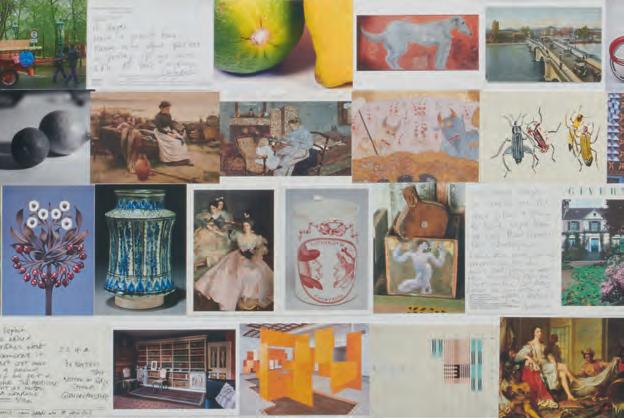
Himid’s work, where they take on mercurial meanings – sour, savoury or saccharine, fresh or cloying – but they are also important to Kettle’s Yard and the Edes’ compositions of space. In the Kettle’s Yard cottages, famously, a lemon sits on a pewter plate where it creates a visual harmony with the yellow ellipsis of Joan Miró’s Tic Tic (1927) hanging nearby, a favourite illustrative example of Jim Ede’s. Meanwhile the coupled lemon and limes in Slightly Bitter pick up on the title of Stawarska’s soundwork for the house, The Sharp Sweet Taste of Limes, a line from Lorde’s On a Night of the Full Moon in which the poet addresses her lover, comparing her body’s taste to the juice of the lime. This erotic imagery reminds us of the powerful alchemy of sweet and sour, pleasure and pain that characterises desire, and structures romantic love. In this intimacy, as well as in the richness of their decades-long collaboration that reaches a crescendo in Slightly Bitter, Himid and Stawarska diverge from the brief almost-friendship of Zofia Gaudier-Brzeska and Nina Hamnett. These two relationships, nonetheless run like parallel tracks in Slightly Bitter. For instance, Stawarska’s long piece of printed and painted paper, yellow with a series of blue strokes, is reminiscent of a watery conduit with a series of postcards floating on its surface. These cards, some face-up, illustrate important places to the Gaudier-Brzeskas around Putney and Fulham in South London (where they lived and worked after leaving France) and face-down annotated with notes between Himid and Stawarska, recording Stawarska’s opportune encounter with GaudierBrzeska’s studio along one of her regular London running routes. While this channel stops midway along one gallery wall, a thin band of printed zinc encircles the space entirely. It is annotated with lines from GaudierBrzeska’s letters to Hamnett, which implore her to visit. Some of these phrases repeat audibly in the space, along with other fragments from the letters and Hamnett’s prose. Voices resonate in Polish, French and English, accents change the intonation of certain words, and at points the speakers attempt to teach one another the trickier phonemes of their
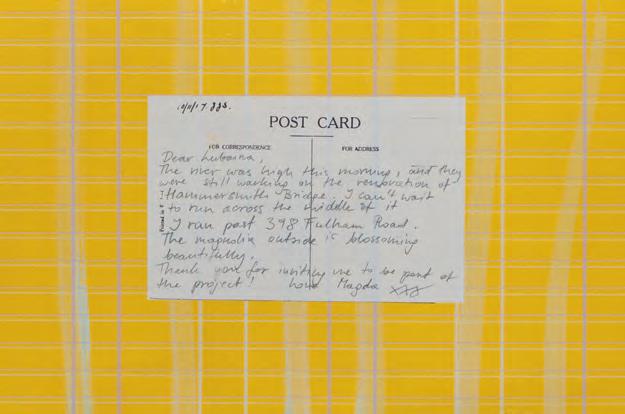
Magda Stawarska and Lubaina Himid, Slightly Bitter (detail), 2025
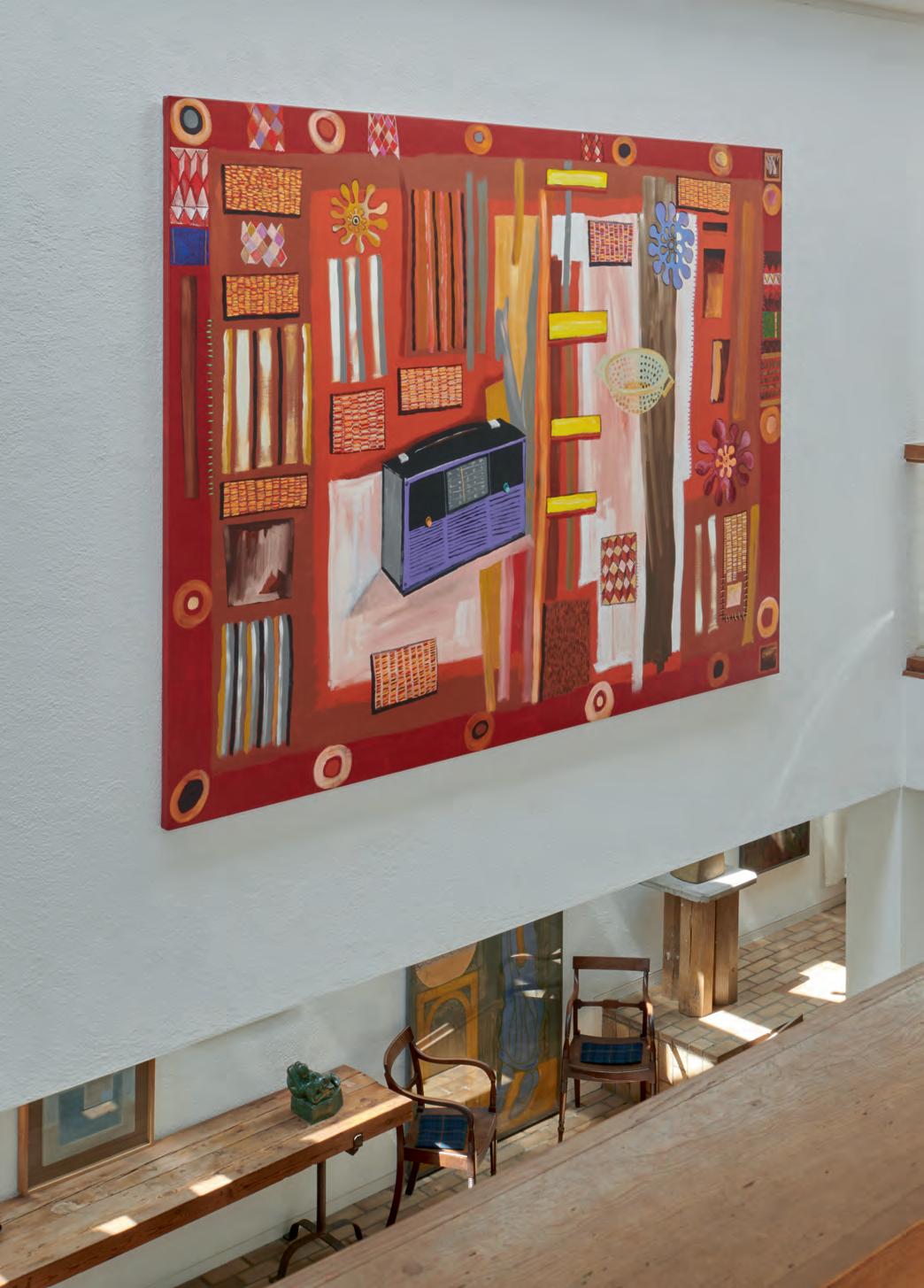
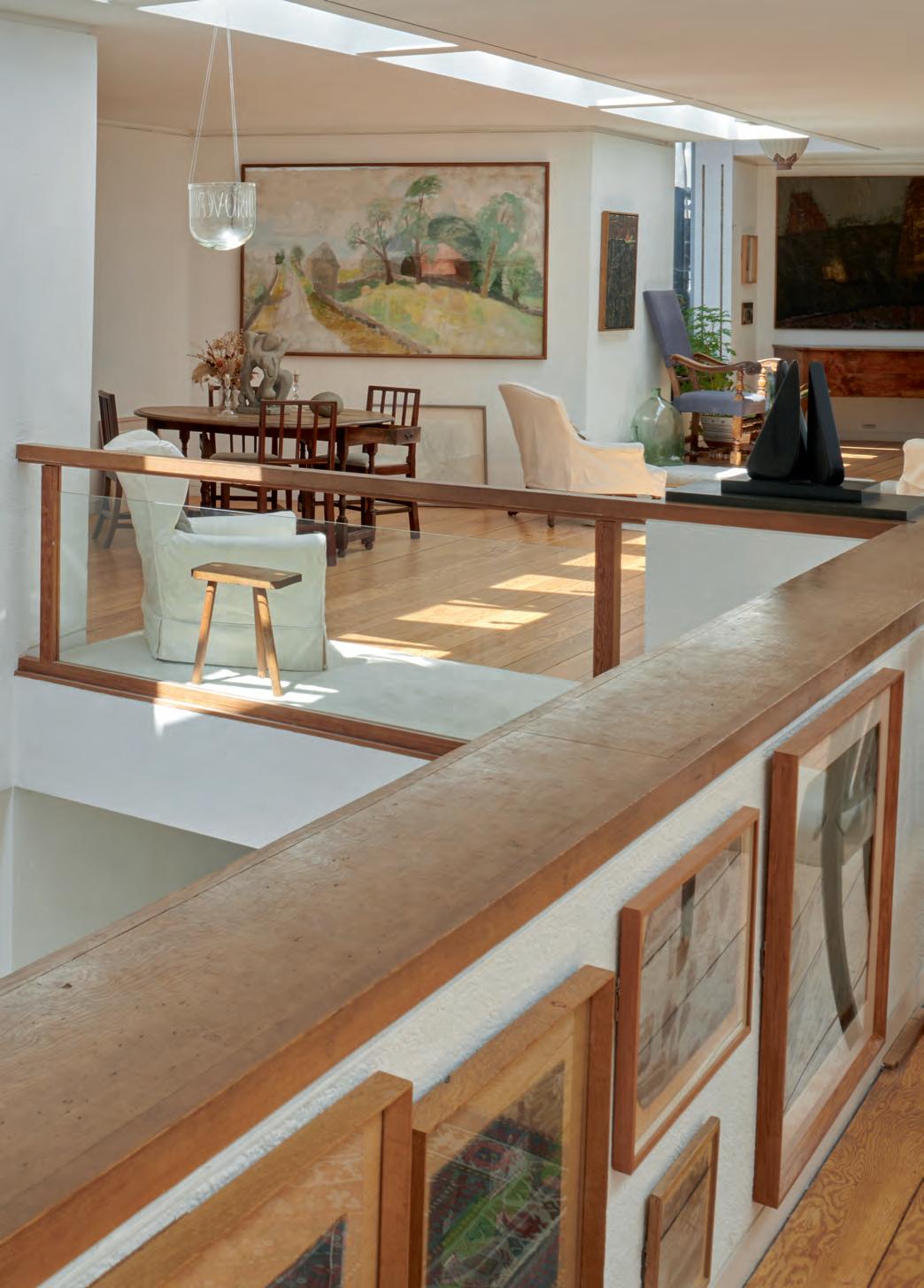
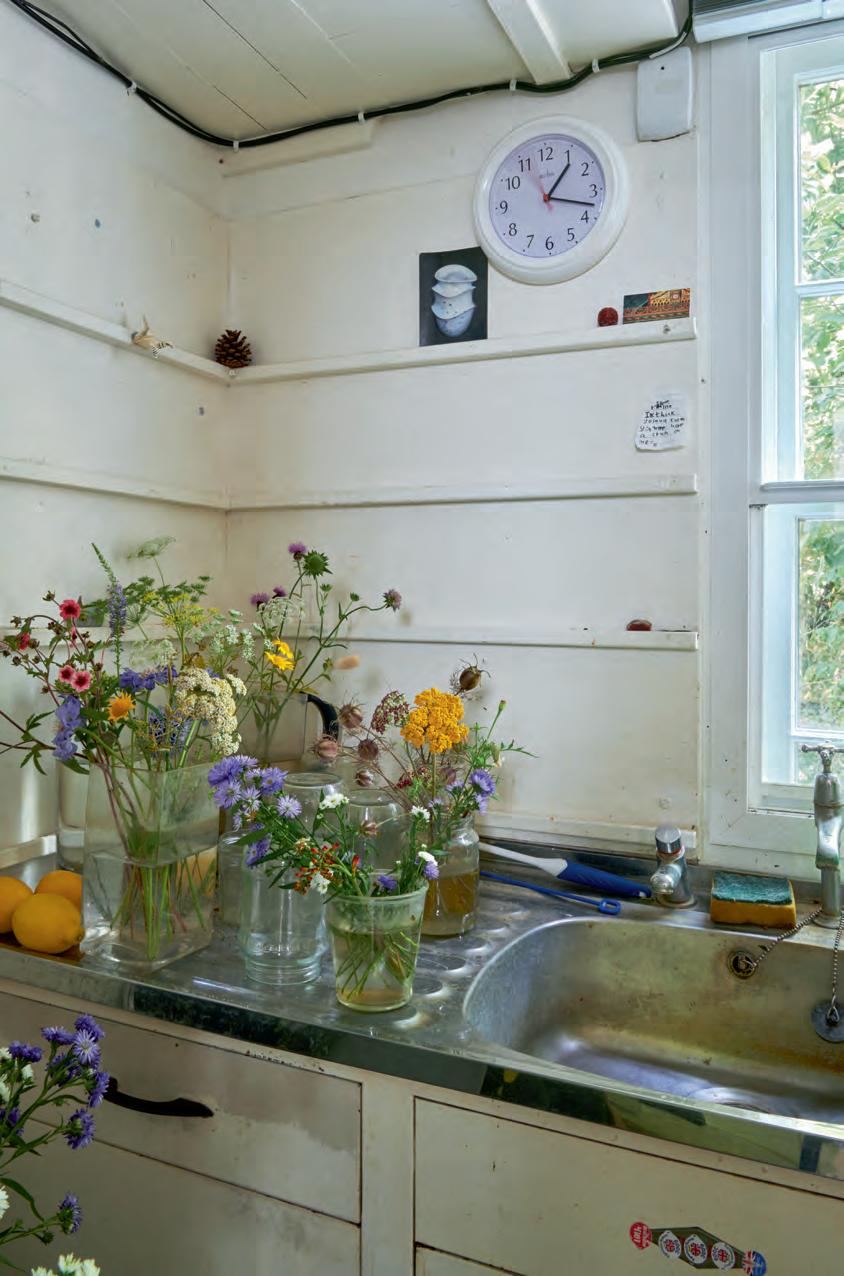
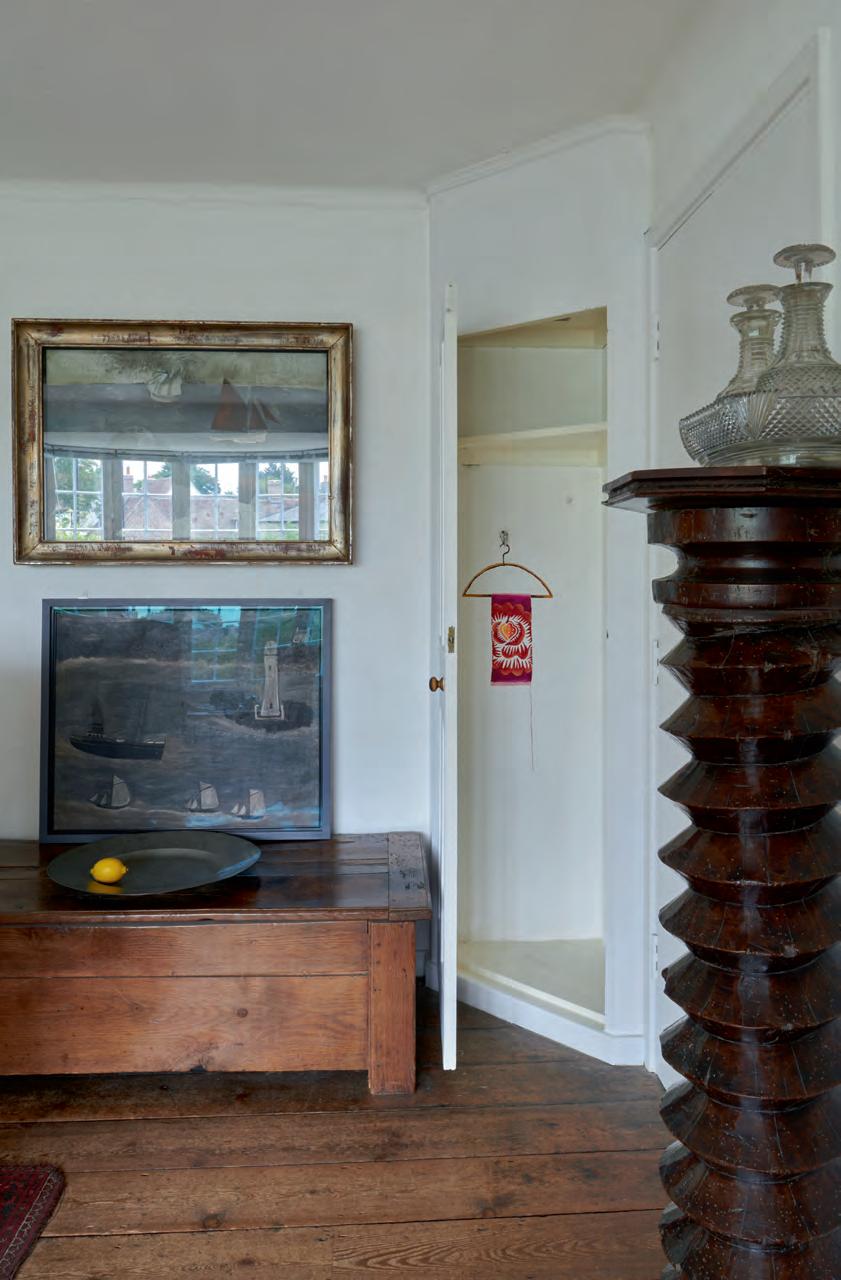

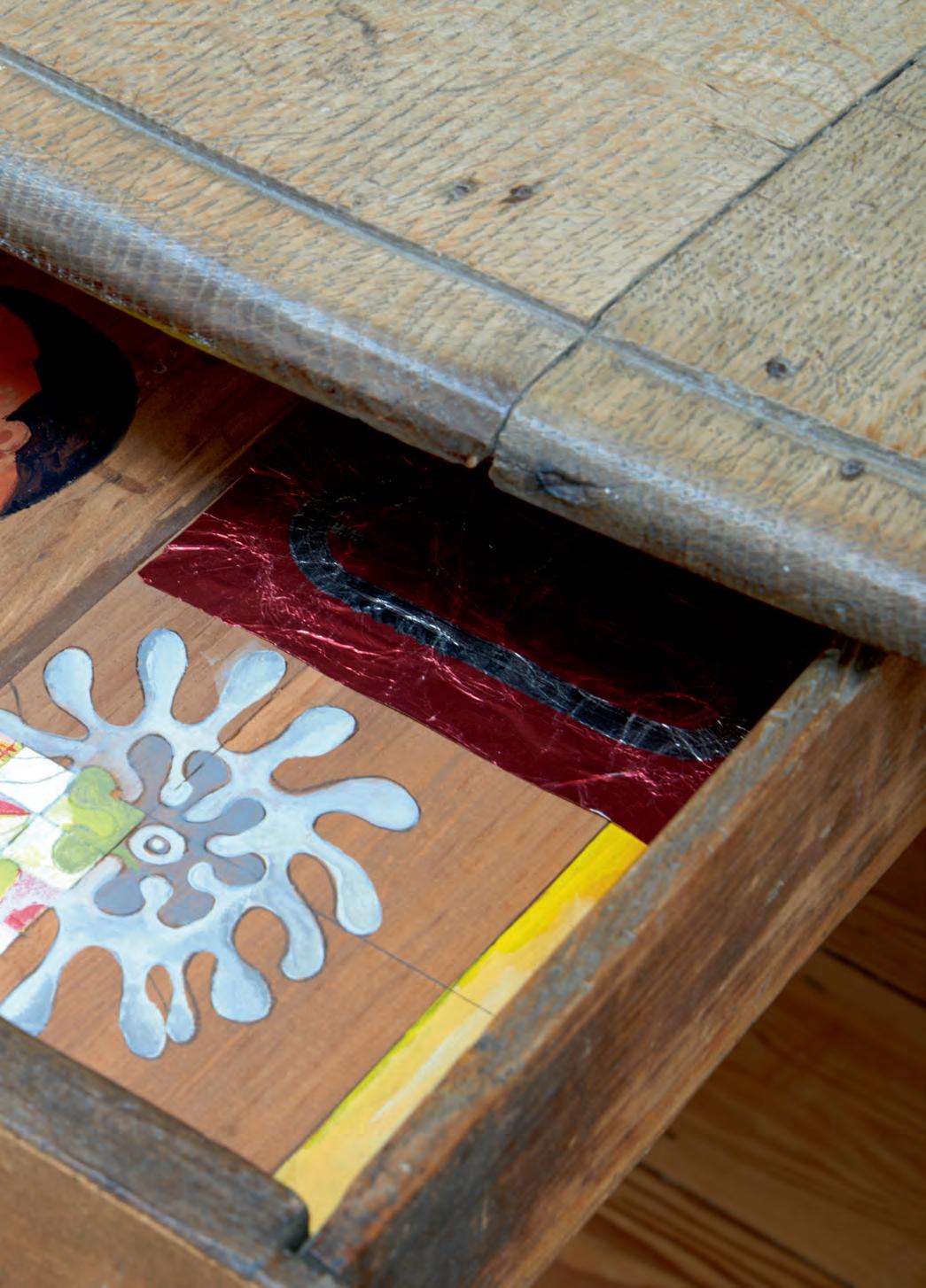
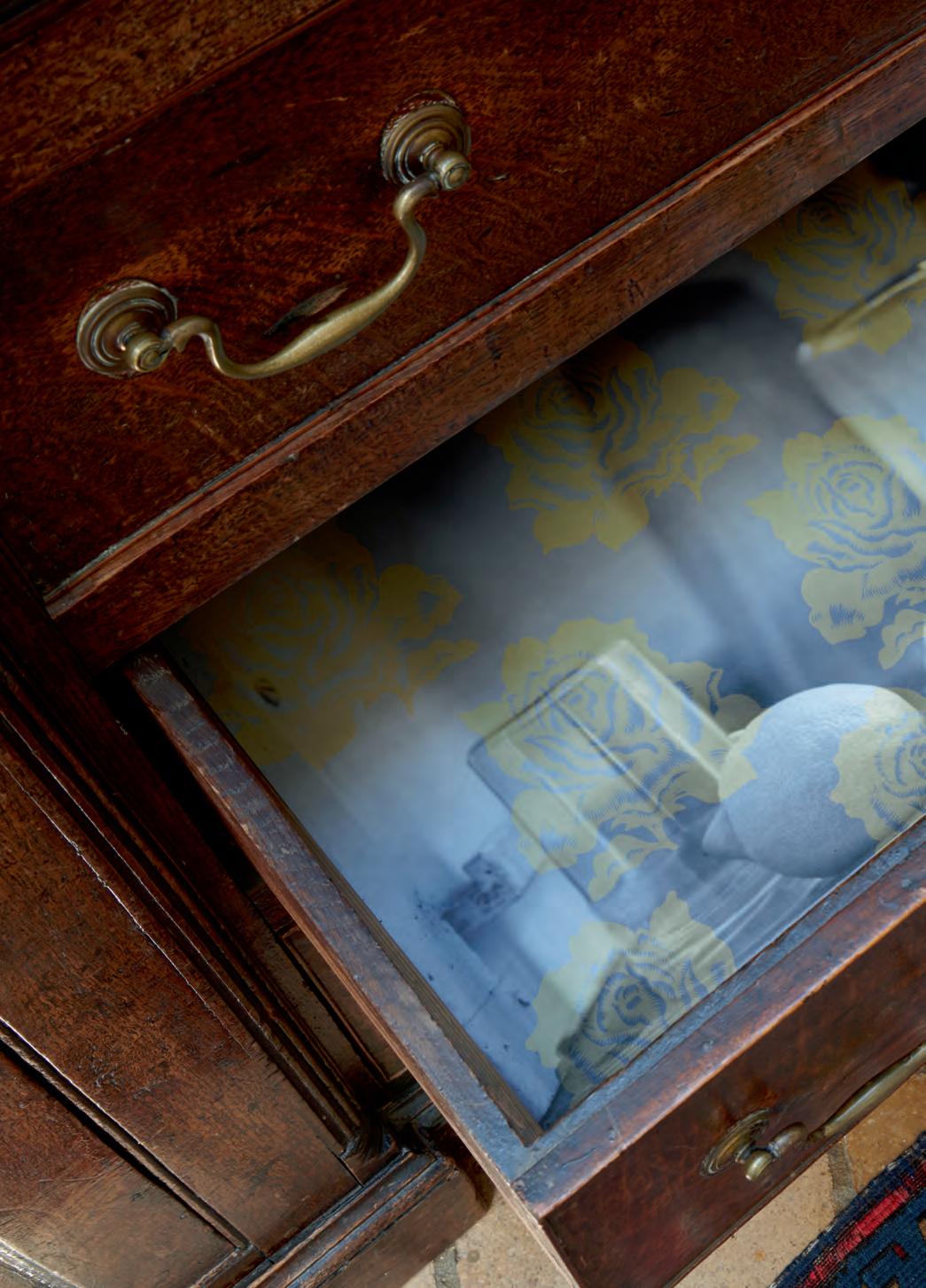
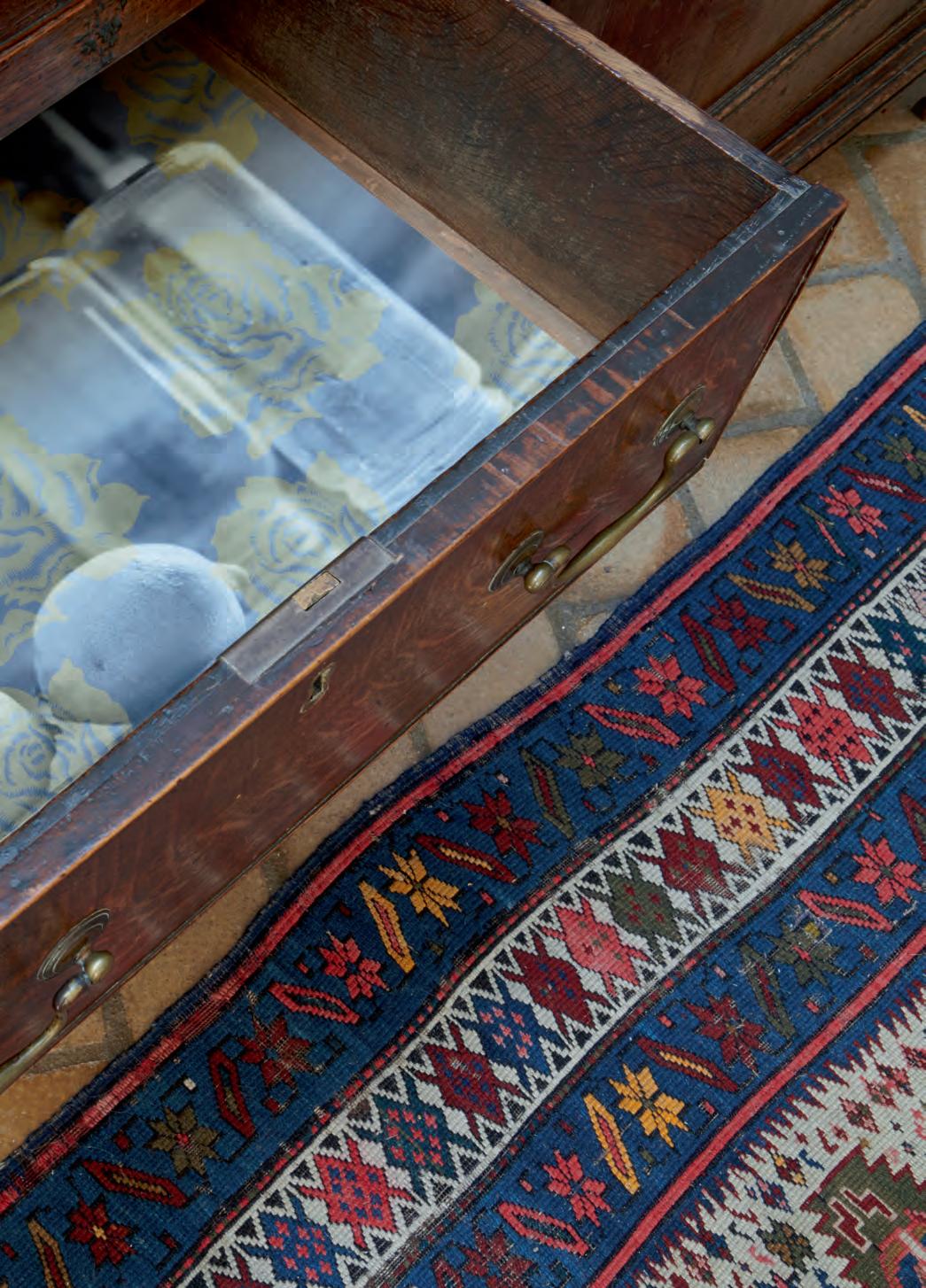
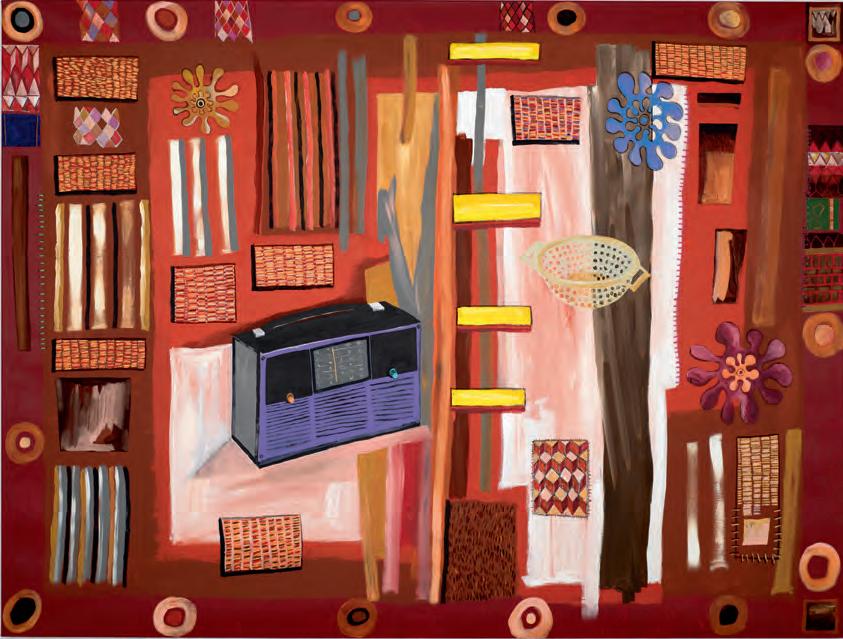
This kind of approach can be traced right throughout Himid’s oeuvre over the last four decades. Her early cut-out installation A Fashionable Marriage (1986) reworked William Hogarth’s satirical painting Marriage A-la-Mode: The Toilette (1743), updating his eighteenth-century figures for the contemporary climate of Thatcher’s 1980s. As part of this installation, Himid looked to the Black figures who appeared in the original painting in predictably peripheral and anonymised background positions. The figure of the enslaved servant who stands in the centre of Hogarth’s composition while simultaneously being pushed into the background, offering a beverage to the white aristocrats who constitute the foreground, is, in Himid’s hands, transformed into the figure of a Black woman artist. Close to nine feet tall, she wears an elaborate, oceanic dress and occupies a centre point in the scene. As with the How Can I Help You? series, the figures who have been pushed to the margins and kept out of sight within the historical record are resuscitated and brought onto Himid’s stage with their own stories, specificities and agencies.
The mid-1980s were the height of what has become known as the British Black Arts Movement (after the earlier Black Arts Movement in the United States during the Civil Rights era). As a leading figure in this movement, Himid curated a series of exhibitions of young Black and Asian women artists: Five Black Women (The Africa Centre, 1983), Black Woman Time Now (Battersea Arts Centre, 1983), and The Thin Black Line (Institute of Contemporary Arts, 1985). During an interview for the BBC series Desert Island Discs, she recalls that this was a time when ‘The notion of Black people being artists was completely alien to people in the British art world; people actually said to me “Black people don’t make art.”’2 Facing this dearth, the challenge was not just to find a way to show her own work, but to help create a context in which her work could exist alongside the work of other Black artists.
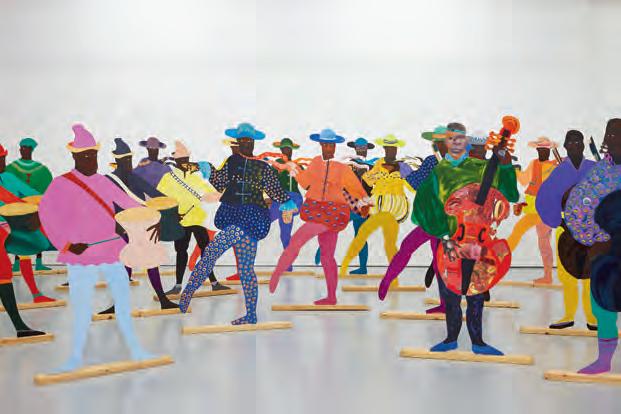
Lubaina Himid, Naming the Money, 2004. Installation view, 2017
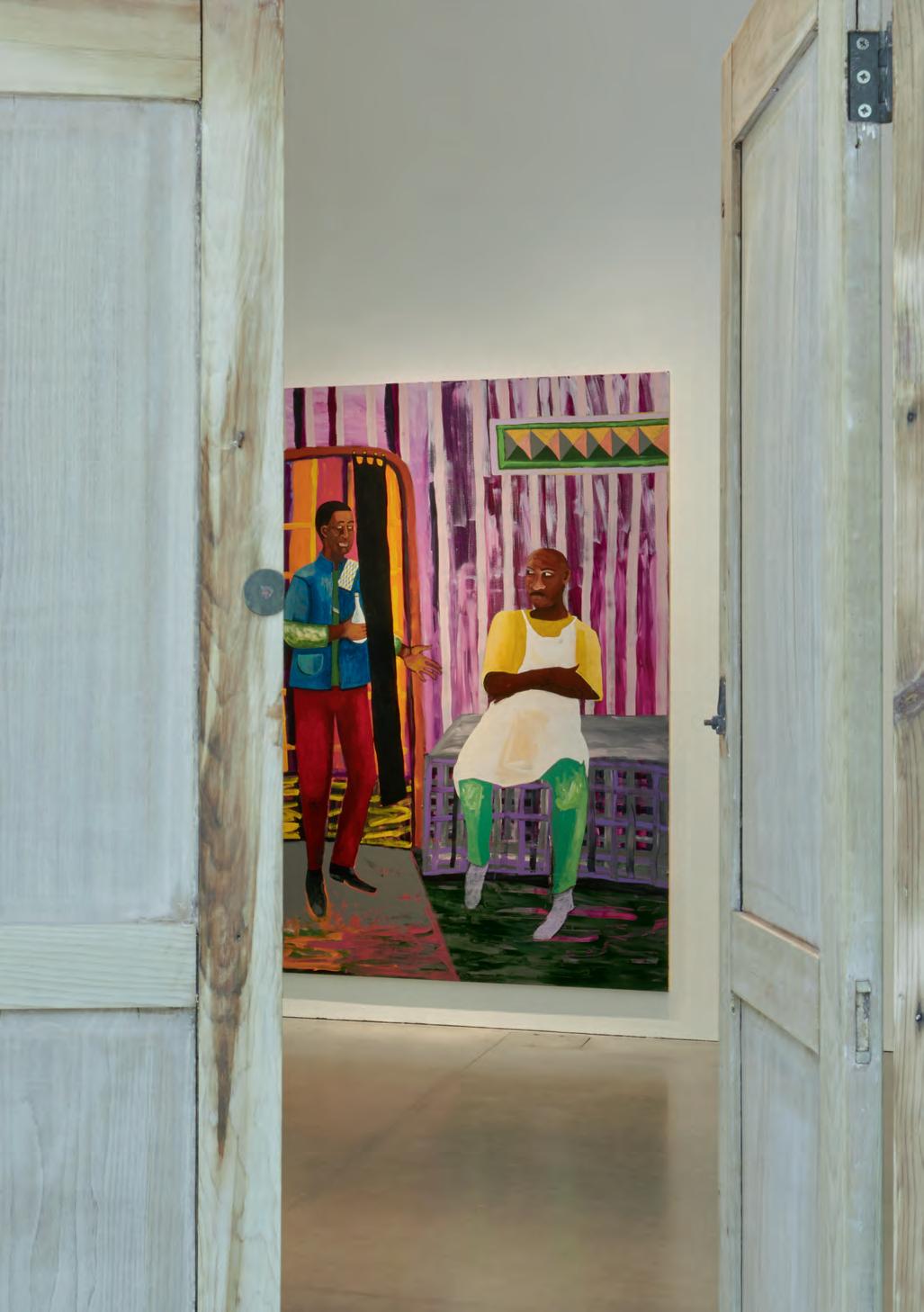
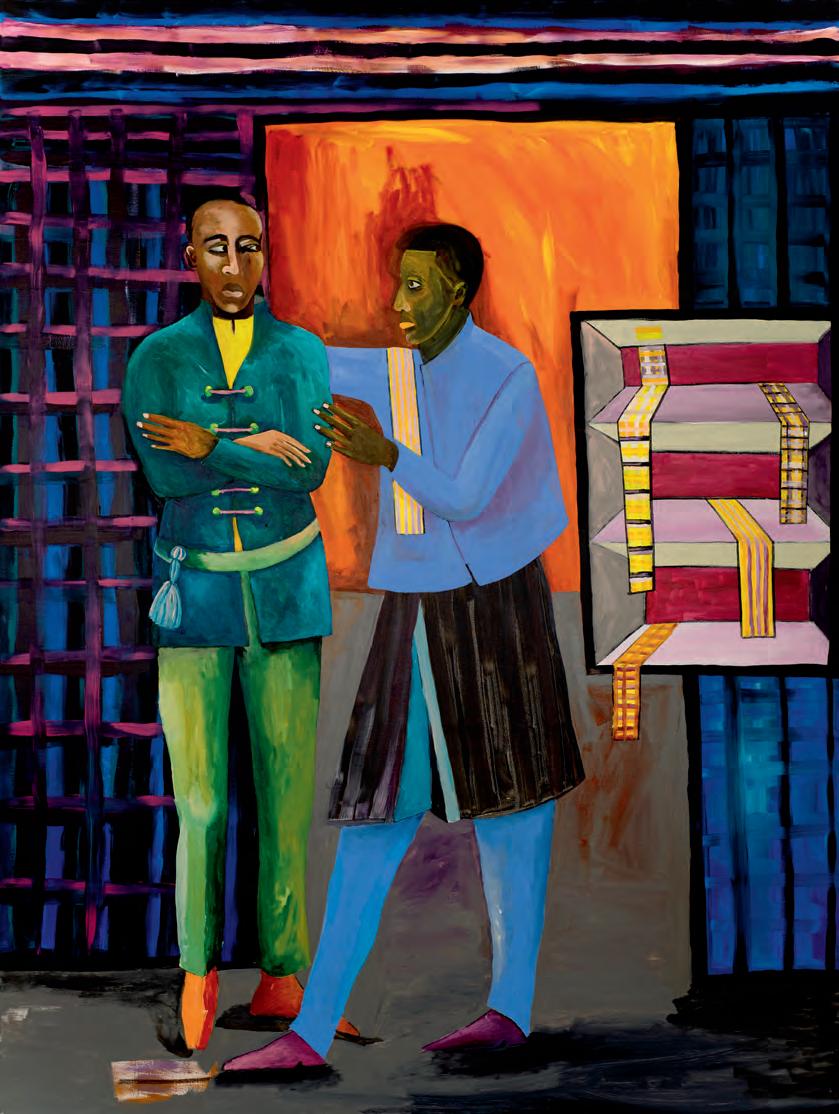
Lubaina Himid with Magda Stawarska: Another Chance Encounter
Edited by Amy Tobin
Published by Kettle’s Yard, University of Cambridge
Design: Mark El-khatib studio
Print: Taylor Brothers, Bristol In an edition of 1500
Typeset in Pitch (Klim Type Foundry) and Turnery (Matter of Sorts)
Printed on Gardapat Kiara and Woodstock Giallo
© 2025 Kettle’s Yard, University of Cambridge
Texts © the authors The authors have asserted their rights under the Copyright, Designs and Patents Act 1988, to be identified as the authors of the work
Images © the artists unless otherwise listed in the Image Credits
All rights reserved. No part of this book may be reproduced or transmitted in any form or by any means, electronic or mechanical, including photocopying, recording or any other information storage or retrieval system, without prior permission in writing from the publisher.
Every effort has been made to ensure images are correctly attributed however if any omission or error has been made please notify the publisher for correction in future editions.
ISBN 978-1-904561-81-1
British Library Cataloguingin-Publication Data: A full catalogue record of this book is available from the British Library
Distribution worldwide by ACC Art Books, Riverside House, Dock Lane, Melton, Woodbridge, Suffolk IP12 1PE
EU Representative: Easy Access System Europe — Mustamäe tee 50, 10621 Tallinn, Estonia, gpsr.requests@easproject.com

